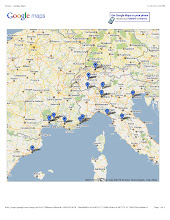Race was one issue in Argentina initially caught my attention in the difficult explanation of the disappearance of blacks. From the first reading the puzzle of the vanishing of the afro-argentines fascinated me. It caused me to evaluate the theories and consider what I think really happened. Through evaluation of the proposed theories based on figures, culture and history, I developed thoughts of my own.
Initially I had a hard time understanding how 30% of the population at the turn of the 19th century. (Independence 41). As seen through the population growth charts in class, there was a sharp incline in population but then a sharp declined followed as well. The explanations for this decline either fall in the dying off theories or the integration theories. These include suggestions of Afro-Argentines suffering poor living conditions, suffering terminal diseases such as yellow fever, or being soldiers in the Triple Alliance War in 1865 (Independence 41). The discrepancy I have with these theories is the assumption of the superiority of whites to with stand the same circumstances. In 1900 90% of the population was living in the worst imaginable circumstances. This proportion of the population living in utter poverty included many more than just Afro-Argentines. Also, the immunity against the Yellow Fever in the 1871 epidemic would have effected the whites as well as the blacks. There may have been a higher proportion of Afro- Argentine soldiers due to incentives, or a military structure designed to place them in the most dangerous places of battle casualties in war would not be limited to afro-argentines, but rather hurt the male population across races.
This prompted a hypothesis further supporting the theory of integration. WIth the afro-argentine women left widowed, there is cause to believe the Argentine men took advantage of the ratio. Additionally, since the agricultural base of cattle required less manual labor than the agricultural economies north of Argentina, slaves were often domestic. The closer encounters with the slaves, more favorable treatment of domestic slaves, as well as the more education of the domestic slaves, all could have contributed to the integration of the afro-argentines. The gradual integration to the population is also furthered by the diverse and huge influx of immigrants that occurred in Argentina. With more immigration, came greater ease to become part of the general population (Independence 41). All of these factors seek to more realistically explain the continual presence of afro-argentine blood with out the visual reminder. It is the theory of integration coupled with the white dominance that leads to the decreased diversity over time.
Summer 2010
Europe May 16- June 2
Itinerary
With Tyler
VeniceBarcelona
AvignonNice
Cannes
Monaco
Cannes
Monaco
With Ben
Milan
Lake Como
Florence
Cinque Terre
Zermatt
Interlaken
Zurich
Tuesday, June 30, 2009
Subscribe to:
Post Comments (Atom)


No comments:
Post a Comment